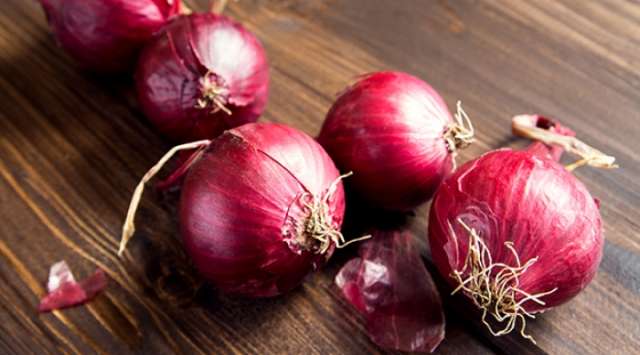The study looked specifically at onions grown in Ontario, which have been shown to have higher concentrations of the flavanoid compound quercetin than other varieties around the world. The authors can’t say for sure that their findings would apply to onions grown elsewhere, but they say it’s likely.
To test different Ontario-grown varieties head-to-head, the researchers used a newly developed technique to extract quercetin and other compounds from five onion species. Then they placed those extracts in direct contact with human colorectal cancer cells. All five species were “excellent at killing cancer cells,” says Neethirajan, but the red variety, Ruby Ring, tested highest for total phenolic content. (Phenols are compounds produced by plants.)
The authors say that red onions not only have high levels of quercetin, but that they’re also rich in anthocyanin—a plant pigment that enhances the ability of quercetin molecules to “scavenge,” or hunt down and destroy, dangerous free radicals that can lead not only to cancer but also to heart disease, diabetes and other inflammation-related conditions.
Anthocyanins are also what provide the red, blue, purple, and black hues of many fruits and vegetables. Nutrition experts have long recommended choosing richly colored fruits and vegetables, and it’s not surprising that red onions would have more cancer-fighting power than white, the authors say. Still, this is the first time the hypothesis has been confirmed in this type of laboratory setting.
The researchers recently found that onions are effective at killing breast cancer cells, as well. They say that onions appear to disrupt communication between cancer cells and promote an unfavorable environment for their growth, encouraging them to die. The next step, they add, will be testing these theories in human trials.
They also hope that the extraction technique tested in their study—which uses heated water in a pressurized container—will allow the quercetin in onions to one day be added to variety of fortified foods and even medicines. Unlike other extraction methods, this one does not use toxic solvents or chemicals.
For now, the best way to get those valuable nutrients is to eat onions themselves; for the biggest nutritional punch, choose red and eat them raw, since cooking destroys some of their antioxidant properties.
The study was funded by the Natural Science and Engineering Research Council of Canada and the Ontario Ministry of Agriculture, Food and Rural Affairs, and the onions were provided by the Holland Marsh Growers Association.
The findings are important not just to onion consumers, says Neethirajan, but also to onion growers, as well. “There are many types of onion varieties, and farmers need to know which is the best to invest in a crop,” he says. Planting more red varieties could give these growers an edge, not just in the food industry but perhaps in the functional food industry, as well.
More about: #Cancer-prevention
















































